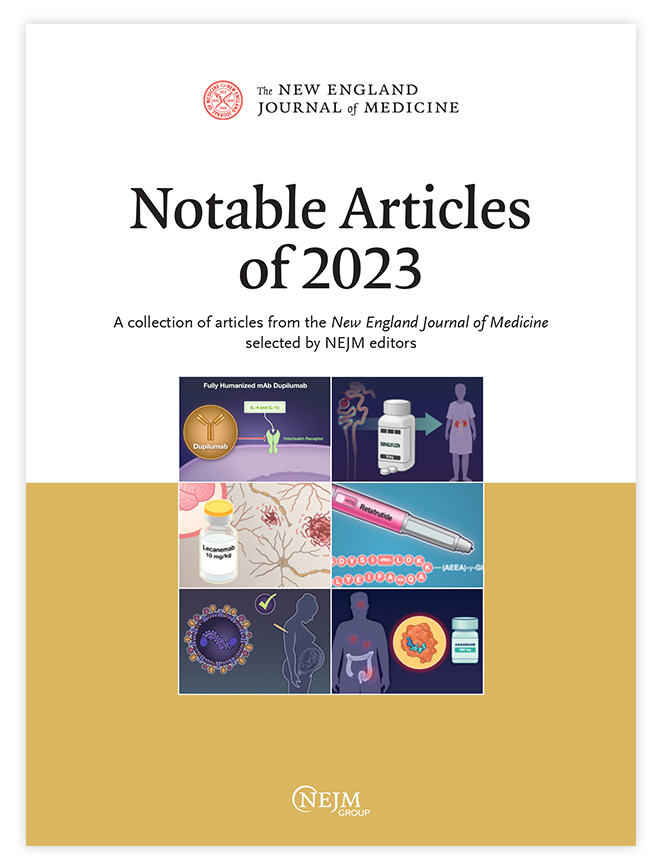Sevabertinib in Advanced HER2-Mutant Non-Small-Cell Lung Cancer.
IF 78.5
1区 医学
Q1 MEDICINE, GENERAL & INTERNAL
引用次数: 0
Abstract
BACKGROUND HER2 gene mutations occur in 2 to 4% of patients with non-small-cell lung cancer (NSCLC). Sevabertinib is an oral, reversible tyrosine kinase inhibitor that has shown anti-HER2 activity in preclinical models. METHODS We conducted an open-label, multicenter, multicohort, phase 1-2 study to evaluate sevabertinib at a twice-daily dose of 20 mg in patients with locally advanced or metastatic HER2-mutant NSCLC. Three cohorts were defined according to previous therapy: cohort D comprised previously treated patients who had not received HER2-targeted therapy; cohort E, patients who had previously received HER2-directed antibody-drug conjugates; and cohort F, patients who had not previously received treatment. The primary end point was an objective response, as assessed by blinded independent central review. Secondary end points were duration of response and progression-free survival. RESULTS A total of 209 patients received sevabertinib (as of June 27, 2025, the data-cutoff date); the median duration of follow-up was 13.8 months in cohort D, 11.7 months in cohort E, and 9.9 months in cohort F. Among 81 patients in cohort D, an objective response was observed in 64% (95% confidence interval [CI], 53 to 75); the median duration of response was 9.2 months (95% CI, 6.3 to 13.5), and the median progression-free survival was 8.3 months (95% CI, 6.9 to 12.3). Among 55 patients in cohort E, an objective response was observed in 38% (95% CI, 25 to 52); the median duration of response was 8.5 months, and the median progression-free survival was 5.5 months. Among 73 patients in cohort F, an objective response was observed in 71% (95% CI, 59 to 81), and the median duration of response was 11.0 months; data on progression-free survival were immature. Grade 3 or higher drug-related adverse events occurred in 31% of the patients. The most common adverse event was diarrhea (in 84 to 91%), with diarrhea of grade 3 or higher occurring in 5 to 23%. Treatment was discontinued by 3% of the patients owing to drug-related adverse events. CONCLUSIONS Sevabertinib showed antitumor activity in patients with locally advanced or metastatic HER2-mutant NSCLC. Diarrhea was the most common adverse event. (Funded by Bayer; SOHO-01 ClinicalTrials.gov number, NCT05099172.).西伐替尼治疗晚期her2突变型非小细胞肺癌
背景:her2基因突变发生在2% - 4%的非小细胞肺癌(NSCLC)患者中。Sevabertinib是一种口服可逆酪氨酸激酶抑制剂,在临床前模型中显示出抗her2活性。方法:我们进行了一项开放标签、多中心、多队列、1-2期研究,以评估西伐替尼在局部晚期或转移性her2突变型NSCLC患者中的应用,每日两次,剂量为20mg。根据既往治疗定义了三个队列:队列D包括未接受her2靶向治疗的既往治疗患者;队列E,先前接受过her2定向抗体-药物偶联药物治疗的患者;F组为以前未接受过治疗的患者。通过盲法独立中心评价,主要终点为客观反应。次要终点是反应持续时间和无进展生存期。结果共209例患者接受了西伐替尼治疗(截至2025年6月27日,数据截止日期);D组的中位随访时间为13.8个月,E组为11.7个月,f组为9.9个月。在D组的81例患者中,有64%的患者出现了客观缓解(95%可信区间[CI], 53 ~ 75);中位缓解持续时间为9.2个月(95% CI, 6.3至13.5),中位无进展生存期为8.3个月(95% CI, 6.9至12.3)。在队列E中的55例患者中,38%的患者观察到客观反应(95% CI, 25 - 52);中位缓解持续时间为8.5个月,中位无进展生存期为5.5个月。在F队列的73例患者中,71%的患者观察到客观反应(95% CI, 59 - 81),中位反应持续时间为11.0个月;无进展生存期的数据尚不成熟。31%的患者发生了3级或更高级别的药物相关不良事件。最常见的不良事件是腹泻(84%至91%),3级或以上的腹泻发生率为5%至23%。3%的患者由于药物相关不良事件而停止治疗。结论西伐替尼对局部晚期或转移性her2突变型NSCLC患者具有抗肿瘤活性。腹泻是最常见的不良反应。(拜耳资助;SOHO-01 ClinicalTrials.gov编号:NCT05099172)。
本文章由计算机程序翻译,如有差异,请以英文原文为准。
求助全文
约1分钟内获得全文
求助全文
来源期刊

New England Journal of Medicine
医学-医学:内科
CiteScore
145.40
自引率
0.60%
发文量
1839
审稿时长
1 months
期刊介绍:
The New England Journal of Medicine (NEJM) stands as the foremost medical journal and website worldwide. With an impressive history spanning over two centuries, NEJM boasts a consistent publication of superb, peer-reviewed research and engaging clinical content. Our primary objective revolves around delivering high-caliber information and findings at the juncture of biomedical science and clinical practice. We strive to present this knowledge in formats that are not only comprehensible but also hold practical value, effectively influencing healthcare practices and ultimately enhancing patient outcomes.
 求助内容:
求助内容: 应助结果提醒方式:
应助结果提醒方式:


